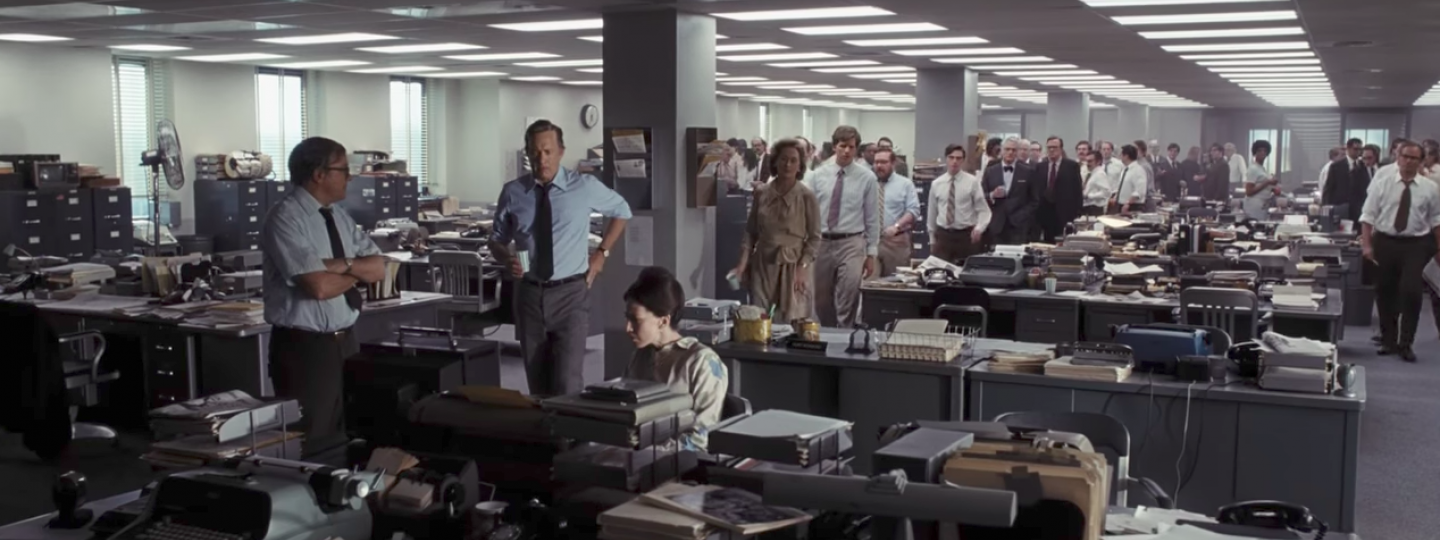The trailer for "The Post" is out, and if you can keep from fixating on Tom Hanks' attempt at a Ben Bradlee growl, you may notice something else – the fictional newsroom doesn't look all that unfamiliar.
There are two reasons. One, it's mostly full of white men. And two, it's mostly full of fluorescent lighting.
"The Post," which comes out early next year in wide release, stars Meryl Streep as Katharine Graham, "the first female publisher of a major American newspaper, and Hanks plays the paper's editor, Ben Bradlee – both of whom risk their careers and personal security to help expose a cover-up of government secrets spanning three decades and four presidents," according to Rolling Stone.
In a time when people have a lot of different feelings about journalism versus the government, Steven Spielberg's telling of "The Post" and the Pentagon Papers may feel satisfying, depending on those feelings.
But the sameness of how many newsrooms still look is not satisfying at all.
ASNE's latest diversity survey, which looked at 598 newspapers and 63 online-only news sites, found that people of color made up 16.55 percent of newsrooms. At newspapers, 38.9 percent of employees were women and at online-only publications, 47.8 percent.
As Nieman Lab points out, that last number hasn't changed much since the survey started in 2001.
You can explore the numbers here, including at the Post itself. That newsroom looks quite different than it does in the movie. For instance, 69 percent of staff there are white, and, unlike in the days of Graham, half of newsroom leaders are now female.
The other sense of sameness comes from how the newsroom physically looks – warrens of cubicles and overhead runways of fluorescent lighting. A lot of newsrooms still look exactly the same.
That may seem like a trivial thing to point out, but a recent report from the American Press Insitute found that as legacy newsrooms reinvent themselves digitally, they've had to do so physically, too.
They're now built for digital workflows that require collaboration and communication instead of assembly-line thinking. Also, many include natural light. That light, API's report notes, is something that boosts morale. Actually, it's something the Post has a lot of in its new building.
The Washington Post put a premium on natural light and found it to be one of the most satisfying features of its new location. The open layout and banks of windows allow sunlight to filter through glass-walled walkways into the newsroom’s central hub.
Journalists and newsrooms in TV and movies sometimes feel like a distortion (sometimes a funny distortion) of what really goes on there. "Spotlight" tapped into the power of local journalism and the basic uniform many journalists adopt. There are no doubt a lot of great lessons for journalists and journalism now from journalists and journalism then.
But one thing that stands out from this sliver of "The Post" is that the Post itself, at least, doesn't look much like it used to.







